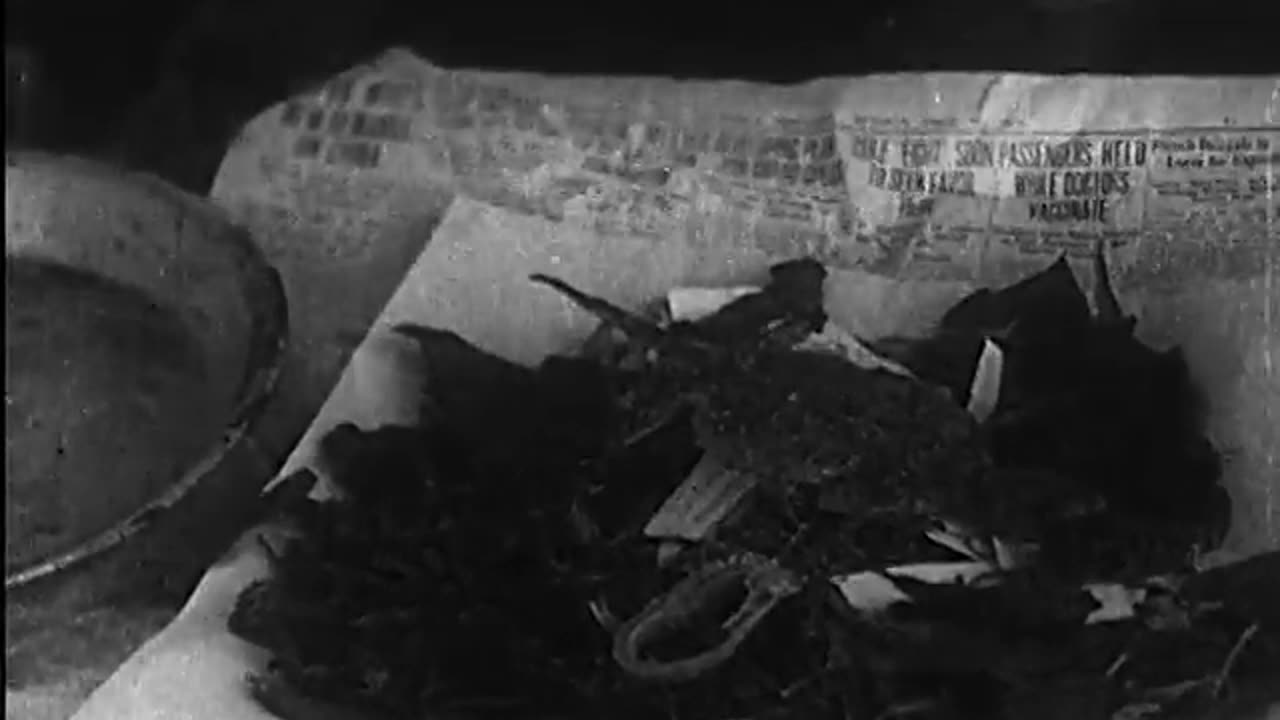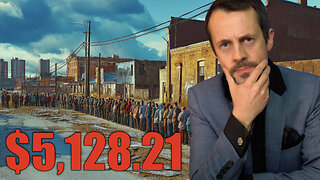Premium Only Content

Seeing America's Greatest Chinatown: San Francisco (Part II)
This silent black-and-white film, presented by Captain H.J. Lewis, continues to delve into the rich tapestry of San Francisco's Chinatown, showcasing a blend of daily life, cultural practices, and commercial activities:
Media and Social Activities:
Newspaper: Begins with a close-up of a Chinese newspaper, highlighting the community's connection to both local and global events.
Gambling: Captures men around a table, smoking and engaged in what appears to be gambling, illustrating one aspect of social life in Chinatown.
Culinary and Commercial Life:
Dining: Shows a Chinese family in traditional attire enjoying a meal at a restaurant, engaging in a playful drinking game, reflecting communal joy and tradition.
Poultry Shop: Offers an inside look at the operations of a butcher shop, where poultry is sold, providing insight into the local food supply chain.
Cultural Practices:
Fashion: Features a woman in traditional Chinese clothing, her interaction with the camera offering a moment of cultural display and flirtation.
Apothecary: Concludes an earlier sequence with humorous reactions to traditional Chinese medicine, emphasizing its cultural significance and the sensory experience of consuming these remedies.
Rituals and Ceremonies:
Funeral Practices: Documents a traditional Chinese funeral ceremony, with children in ceremonial robes performing ritual acts, showcasing the depth of cultural rites and the community's reverence for tradition.
Community Interaction:
Captain Lewis with Children: A damaged scene showing Lewis with local children, suggesting his role in bridging cultural gaps and providing education through interaction.
Notes on Authenticity: Bert Gould's comment about some scenes possibly being staged for the film adds an interesting layer to how these travelogues were created, blending documentary with staged elements to tell a story or highlight specific aspects of Chinatown life.
This part of the travelogue not only documents the everyday and ceremonial aspects of life in Chinatown but also serves as a cultural bridge, offering non-Chinese viewers a window into a vibrant community's way of life at the turn of the century.
-
 LIVE
LIVE
Wendy Bell Radio
5 hours agoLONG LIVE THE KING
12,794 watching -
 1:27:55
1:27:55
Game On!
17 hours ago $4.36 earnedThe BIGGEST Hockey Match of the Century: USA vs Canada!
47.1K4 -
 17:20
17:20
Bearing
2 hours agoElon Musk's Baby Mama Drama 😧 Did he Stick it in CRAZY??
6.73K4 -
 LIVE
LIVE
2 MIKES LIVE
2 hours agoTHE MIKE SCHWARTZ SHOW with DR. MICHAEL J SCHWARTZ 02-20-2025
186 watching -
 10:33
10:33
ThinkStory
19 hours agoCOMPANION Ending Explained!
62.9K3 -
 19:59
19:59
Neil McCoy-Ward
19 hours ago🇺🇸 $5,128.21 DOGE Stimulus Check Refund?! Here’s What You Need to Know!
46.6K25 -
 29:22
29:22
Degenerate Jay
22 hours ago $3.94 earnedIs Captain America: Brave New World That Bad? - Movie Review
41.3K5 -
 2:35
2:35
Mrgunsngear
21 hours ago $4.74 earnedFrying Pan As Improvised Body Armor?
63.2K27 -
 9:07
9:07
Silver Dragons
20 hours agoThis GOLD REVALUATION Will Change Everything
57.7K9 -
 9:16
9:16
MudandMunitions
20 hours agoGriffin Armament 3x Prism Optic Unboxing and First Impressions! The Ultimate Tactical Upgrade
47.1K2